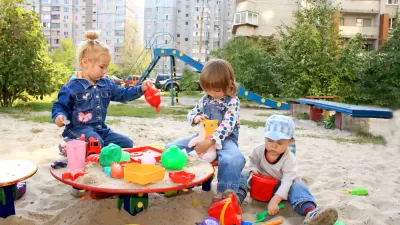The Lego brick is 65 years old this year. Learn more about its history and impacts on both children and adults.

Did you know that Lego is derived from the Danish phrase leg godt which means "play well"? Lego has certainly been well-played by many generations and is well-known for its multicolored, interlocking plastic bricks accompanying an array of gears, figurines, and other parts. Lego pieces may be assembled and connected in a variety of ways to build objects, including buildings, vehicles, and working robots; anything constructed can be taken apart again and the pieces reused to create new things.
As it exists today, the Lego brick is 65 years old, with the Billund, Denmark-based company patenting its iconic design back on January 28, 1958. In this fascinating article by Jason Aten, we learn more about the history and appeal of this “thoughtful toy.” While the brick has not changed for over six decades, it is as popular as ever and continues to promote “learning through play.” As Aten explains, the toy has a multi-generational dimension: “Every time a parent passes along a set of bricks to their child, they pass along all of the imagination and memories. They pass along something more than just empty-minded distractions.”
To learn more, please read the source article.
FULL STORY: 65 Years Ago, Lego Patented Its Iconic Brick. This Vintage Ad Is a Reminder of Why the Brand Is So Beloved

Maui's Vacation Rental Debate Turns Ugly
Verbal attacks, misinformation campaigns and fistfights plague a high-stakes debate to convert thousands of vacation rentals into long-term housing.

Planetizen Federal Action Tracker
A weekly monitor of how Trump’s orders and actions are impacting planners and planning in America.

Chicago’s Ghost Rails
Just beneath the surface of the modern city lie the remnants of its expansive early 20th-century streetcar system.

Bend, Oregon Zoning Reforms Prioritize Small-Scale Housing
The city altered its zoning code to allow multi-family housing and eliminated parking mandates citywide.

Amtrak Cutting Jobs, Funding to High-Speed Rail
The agency plans to cut 10 percent of its workforce and has confirmed it will not fund new high-speed rail projects.

LA Denies Basic Services to Unhoused Residents
The city has repeatedly failed to respond to requests for trash pickup at encampment sites, and eliminated a program that provided mobile showers and toilets.
Urban Design for Planners 1: Software Tools
This six-course series explores essential urban design concepts using open source software and equips planners with the tools they need to participate fully in the urban design process.
Planning for Universal Design
Learn the tools for implementing Universal Design in planning regulations.
planning NEXT
Appalachian Highlands Housing Partners
Mpact (founded as Rail~Volution)
City of Camden Redevelopment Agency
City of Astoria
City of Portland
City of Laramie





























